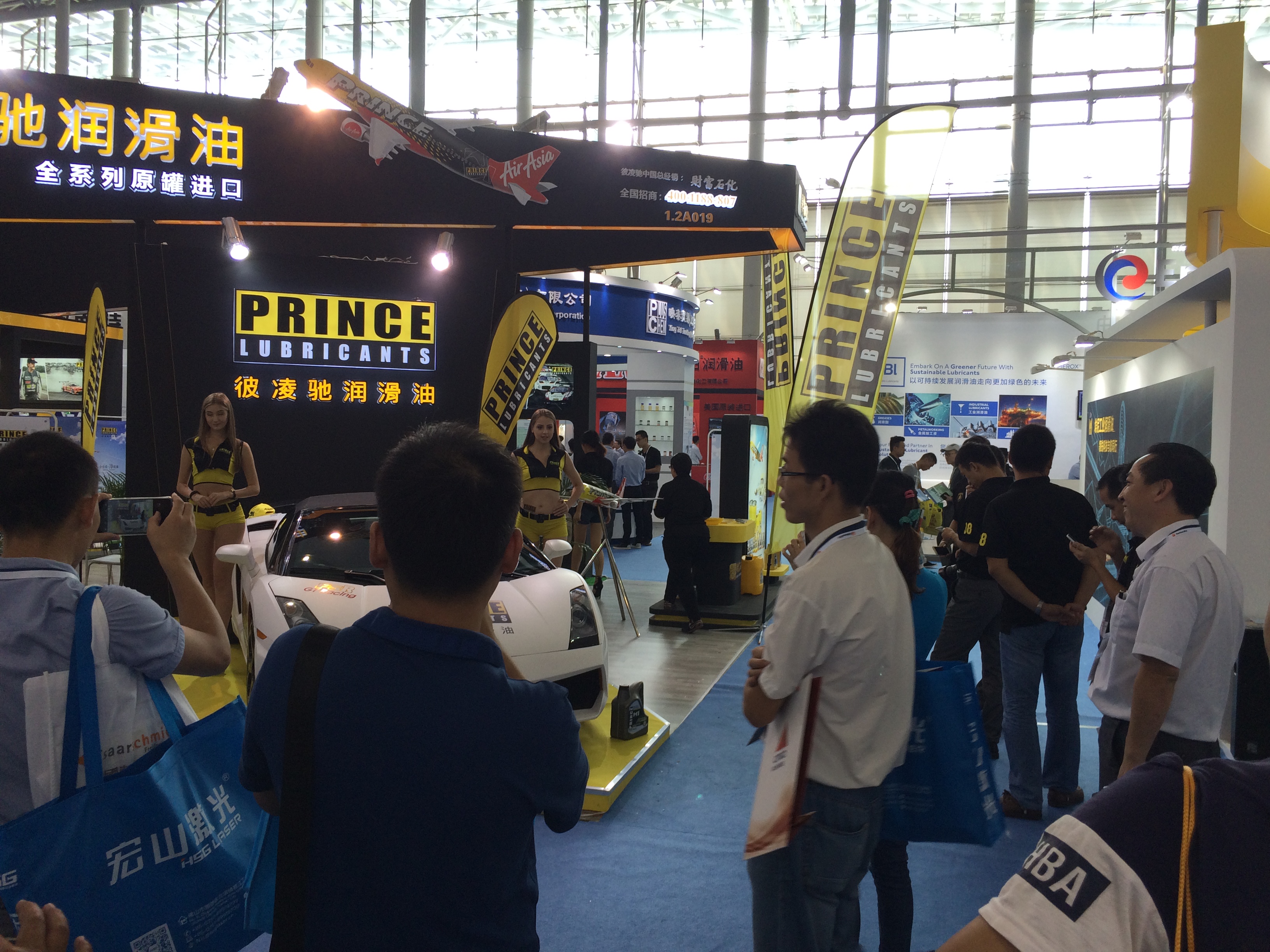GUANGZHOU, China-An industry trade show in southern China last month brought thousands of participants under one roof. Among various finished lube marketers in attendance, one theme resonated unanimously: in coming years, Chinas cutthroat market will favor quality brands over impostors more than ever.
The 17th China International Lubricants and Technology Exhibition (Inter Lubric) brought approximately 8,000 lubricant industry professionals to the southern city of Guangzhou, Guangdong province, show manager Intex Shanghai Co. estimated. More than 200 firms displayed booths on 14,000 square feet of the China Import and Export Fair Complex for the expo portion of the Sept. 19-22 event, which also included a sub-conference, forum with training sessions and other fringe programs.
Lube Report Asia spoke to various-sized finished lube exhibitors about the climate for sales in China and found mixed opinions about where the market stands and where its headed. Depressed, on the rise, and stagnant were expressions different players used to describe their current situation. But while they differed on assessments of the markets health, oil marketers seemed to be in an echo chamber on some points: namely, that weak brands wont survive as competition continues to heat up.
The market is becoming more diversified and fragmented, said a spokesman for Jiangsu Jama Lubricant Co. Big international companies have been some of the leading suppliers, but their share is giving way to smaller Chinese firms -which have been strengthening in some instances through consolidations – said Jamas e-commerce chief, Xing Xue. A continuing development among domestic companies is that theres more pressure to perform as well as the big internationals.
CleanOil Ltd. Marketing Manager Susanna Chan noted the increasing diversification as well, citing an influx of foreign brands entering the market in addition to a proliferation of new Chinese players. Thats a good sign, she said, because it demonstrates the existence of opportunities in a thriving market, but it also forces consolidation and weeds out those that cant cut it.
Theres lots of competition, mostly with the many, many companies with low standards that claim to be on the same playing field [as established brands], concurred Bi Bokuan, assistant general manager for Sarlboro Petrochemical. Toho-oil Global Pte.s mainland China representative, Ling Hong, said that substantiating the strength of her companys superior products in a market full of low-priced fakers is her companys biggest challenge.
Chinas market still needs to improve, as its not as advanced as the developed markets, Ling said. Government regulations are helping spur quality improvements, but its a long process. Many smaller companies are dropping out of the market and being kicked out of the market, with no strength to survive, as consumers are becoming more educated and demanding better products.
Sano Car Sales Supervisor Liu Yinchu and Shenzhen Fortune Petrochemical Investment Co. Area Sales Manager Chen Liyi each shared similar sentiments. Liu said, If you operate with low quality or counterfeit products, you dont stand a chance. Not many years ago, there were around 5,000 or 6,000 brands in the Chinese market, said Chen, whose company manufactures Prince Lubricants. Now, there are probably around 1,500. Luckily, he added, the market is deciding who can survive.
Some found the event more fruitful than others. Handi Lubricant Technology Co., the base oil provider Hainan Handis subsidiary that launched finished lubes last year, noted that the show was likely most beneficial for new players. The event offers great exposure for introducing new brands, but bigger companies get incentives [from the organizers] for exhibiting, and as long as the bigger companies and majors are attending, theres pressure for other mature brands to show up as well, the marketing director said. They may not see as good of results each year as they become established.

Photo: Joe Beeton/Lube Report Asia
Chen noted that booth aesthetics and location in the trade hall go a long way as well. Princes setup featured a new Lamborghini orbited by live models holding its products for display – which Chen said attracted a crowd and helped draw the attention of several key new distributors and clients.
The event, known as Inter Lubric, was organized by national oil companies Sinopec and PetroChina along with Shanghai Lubricant Trade Association and local trade bodies. Intex hopes the other major state-owned oil enterprise, China National Offshore Oil Corp., will be involved in next year’s event in Beijing.
The location at which the annual event is held rotates between Guangzhou, Shanghai and Beijing. Some said that latter two megacities draw larger numbers, and therefore are more lucrative. But show managers told a reporter that its important to tap into the southern market as well, and some suppliers agreed. Many foreign brands in China use big exclusive distributors across the nation, Chen added. Local brands copy that model, making the market messy. He and Handis Zhi Li noted that nascent Chinese brands should more strategically target niche and regional markets rather than imitate the sweeping scale of the big, established internationals, and said that the Guangzhou market was vital for that effort.

Photo: Joe Beeton/Lube Report Asia